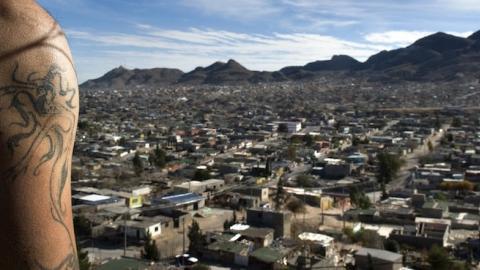Last week, the White House quietly, and unnoticed by any news organization, released the 2015 heroin production estimate for Mexico—it was another huge spike upward to an historic level. The amount of pure heroin produced in Mexico rose to 70 metric tons in 2015, a 67-percent increase over 2014, and a 169-percent increase over the 2013 estimate of 26 metric tons. Nearly all Mexican heroin is targeted at the United States. This flood of heroin is driving overdose deaths and the new estimate indicates that deaths will increase.
Mexican cartels are seeking to create new consumers of heroin by flooding the U.S. market with a cheaper and purer version of the drug. Facing little recent resistance from either Mexican or U.S. leadership, their surge in production and supply-side business plan has demonstrated deadly effectiveness.
For decades, Mexican cartels have produced "black tar" heroin, a sticky, often contaminated drug that is unappealing to all but the most experienced drug users, especially since it is typically injected. But in a calculated attempt to expand their customer base, the Mexican cartels are now using methods Colombian cartels previously copied from Asian traffickers to make heroin in the form of a purer, white powder that can be snorted, thus broadening its appeal to novice American consumers who would normally be averse to injection drug use. Once captured by the drug's power, they become involuntary repeat customers—addicts—just as the cartels and their network of dealers intend.
This supply-driven strategy has effectively added heroin to the menu of drugs too many Americans have already begun using—marijuana, meth, pills, and cocaine. This pattern of poly-drug use has become all-too common and is an important factor in the epidemic growth of heroin use.
Sadly, but not surprisingly, heroin deaths have been increasing as well. Over the past seven years, heroin overdose deaths increased by 440 percent, with over 10,500 in the last measured year, 2014. With 2015's production estimate now showing a huge increase in the drug targeted at the U.S. market, it will not be surprising if the 2015 overdose figures, yet to be released, show a further jump in deaths.
United States cooperation with Mexican authorities has atrophied, removing the pressure and incentives for them to root out heroin production—production that feeds corruption and undermines the rule of law in Mexico. There are no reports that the president, the secretary of state, or the attorney general have called Mexican counterparts to urge joint action.
Instead of a robust and balanced effort across enforcement, treatment, and prevention programs, recent Obama Administration efforts have moved to accommodate the epidemic, with a single-minded focus on reducing the harm to those already addicted, but not preventing new victims. Yet even these efforts are a manifest failure as overdose deaths skyrocket.
If heroin addiction and overdose deaths really are the public health crisis that the administration says they are, then why is there no concern about the agent of infection and the vector through which this behavioral disease is spread? Would we approach an Ebola epidemic this way? Heroin produced and flooding in from Mexico—cheap, potent, and abundant—is feeding and driving this epidemic. Those serious about stopping it need to focus on Mexico and attack the trafficking networks that stretch across the United States.



















